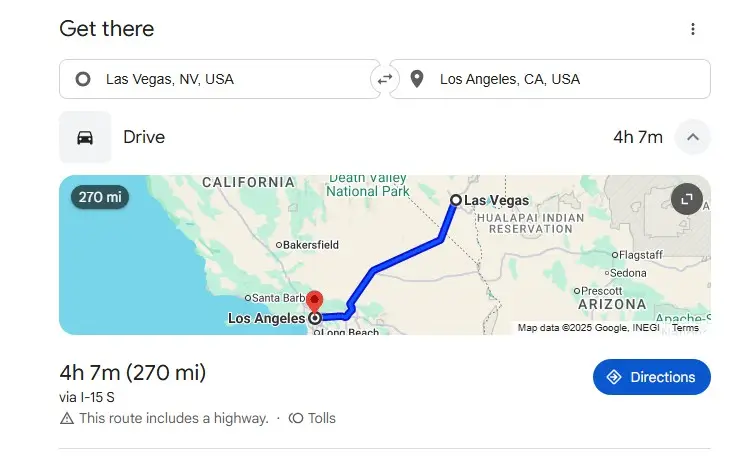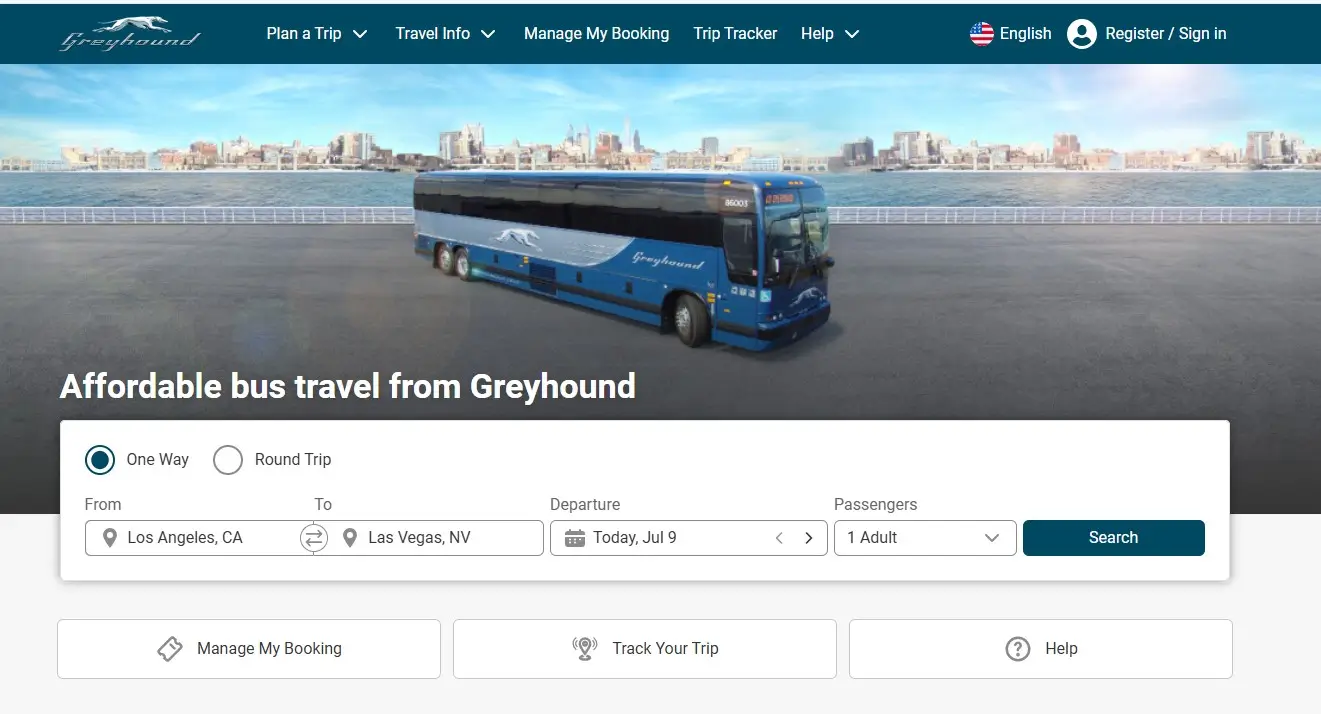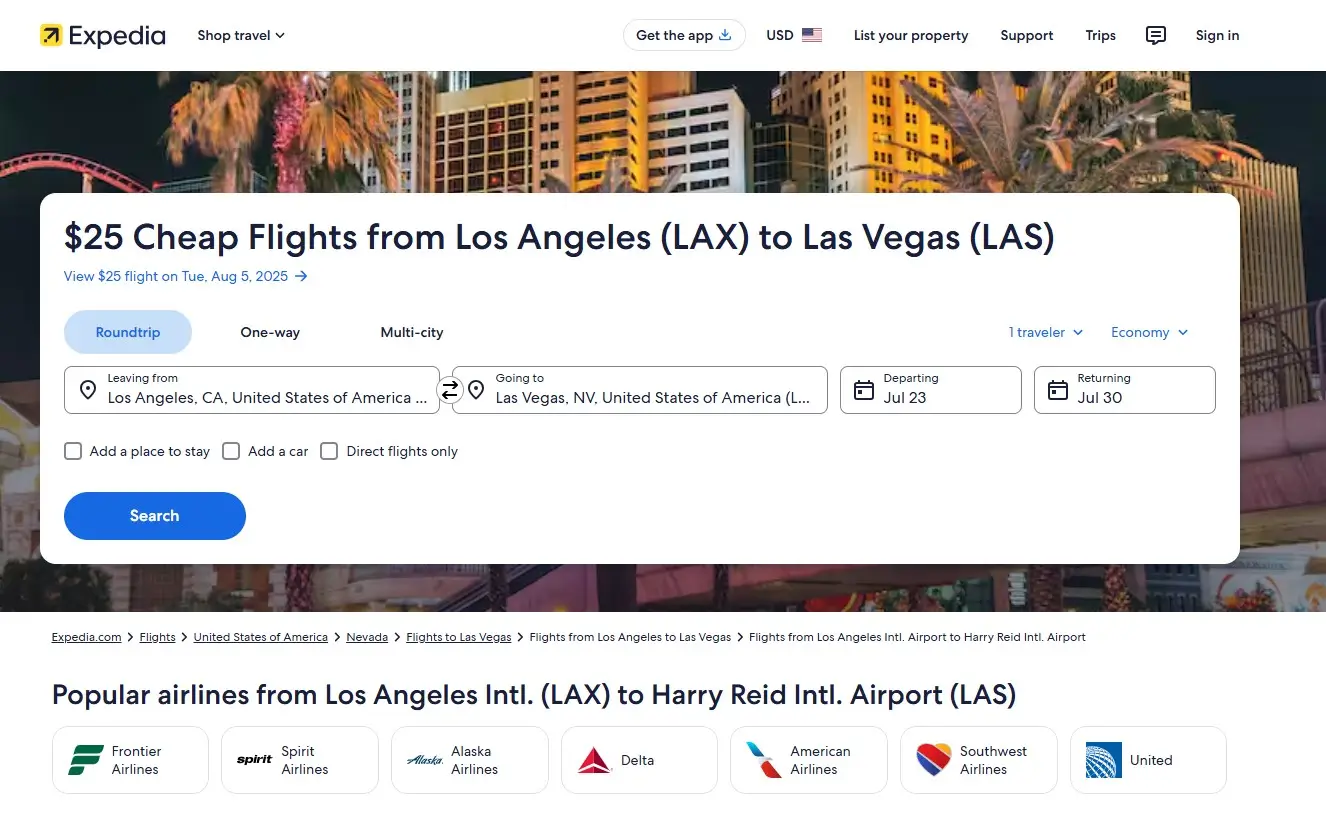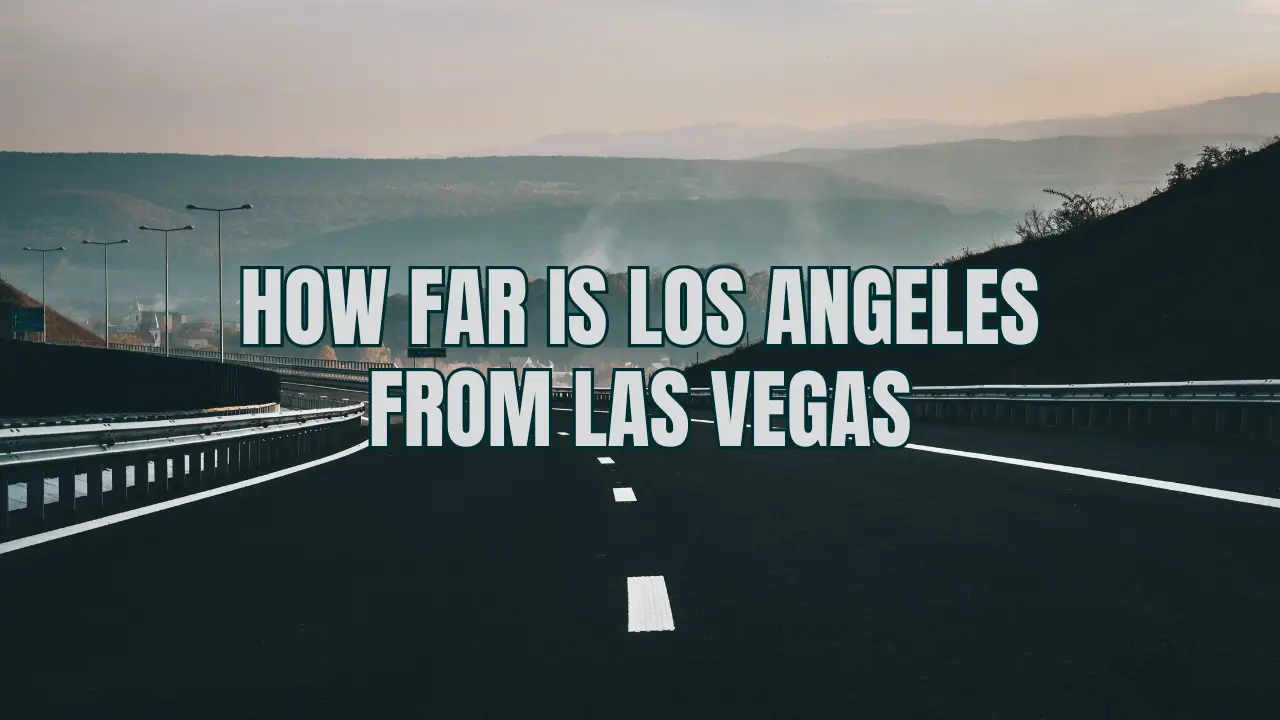Introduction
Los Angeles and Las Vegas—two powerhouse cities on the West Coast, bursting with energy, entertainment, and endless adventure. While LA is famous for its beaches, movies, and celebrities, Vegas is all about dazzling casinos, nightlife, and desert glamour. But how far are these two icons of the American West really from each other?
Whether you’re planning a weekend getaway, a business trip, or a spontaneous road adventure, knowing the distance between Los Angeles and Las Vegas helps you plan better. Many travelers make this journey frequently, so it’s important to understand all the options—driving, flying, or even taking a bus. Let’s dive into how far the City of Angels is from Sin City, and explore the best ways to get from point A to point B.
The Straight-Line Distance
If you’re looking at a map and measuring the shortest distance possible between Los Angeles and Las Vegas, you’ll find it’s about 230 miles (370 kilometers). This is often referred to as the “as-the-crow-flies” distance—a straight line from one point to the other, ignoring roads, mountains, and traffic.
Why does this matter? Well, it gives a base reference point. But in reality, unless you’re flying in a direct route or you’re that metaphorical crow, you’re likely not traveling in a straight line. The actual route you take—whether by road, bus, or plane—will be longer than this direct distance due to road curves, elevation changes, and traffic detours.
So while the aerial distance sets the stage, your actual travel time will depend on your mode of transportation. Still, it’s useful to know this 230-mile figure—it’s often quoted by travel planners and mapping services.
Driving Distance Between LA and Vegas

image Credit: Google Map
Ready to hit the road? The drive from Los Angeles to Las Vegas is a well-trodden one, popular with tourists and locals alike. The most common route takes you along the Interstate 15 (I-15), and the total driving distance is approximately 270 to 290 miles (435 to 467 kilometers) depending on your starting point in LA.
How Long Does It Take?
On average, you’re looking at 4 to 5 hours of drive time, but it’s not always that simple. Here’s what can influence your time:
- Traffic congestion, especially on weekends or holidays
- Construction zones along the freeway
- Weather conditions like desert storms or heatwaves
- Speed limits and personal driving habits
Fuel and Costs
For a standard vehicle, expect to spend around $40–$70 on fuel round-trip, depending on your gas mileage and current fuel prices. Add in the occasional stop for snacks or a break, and it’s still one of the more budget-friendly travel options.
Why It’s Popular
Driving gives you freedom and flexibility. Want to detour through the Mojave Desert? Stop at the iconic Baker thermometer? Or visit the alien-themed gas station in Amargosa Valley? You can’t do that on a plane. Plus, the desert scenery is something to behold, especially at sunset.
Popular Routes from LA to Vegas
While the I-15 freeway is the standard route, there are a few alternate paths that might appeal to the more adventurous traveler.
Primary Route: I-15 Freeway
- Fastest and most direct
- Passes through cities like Barstow, Baker, and Primm
- Well-maintained with rest stops and services
Scenic Route: Route 66 to I-40
If you’ve got extra time, consider taking Route 66 to I-40, then cutting up through Kelbaker Road toward I-15. This gives you a taste of America’s most historic highway, plus some jaw-dropping desert vistas.
Back Road Detours
Some drivers opt for smaller highways like CA-14 to US-395 to NV-160, especially if they’re coming from north or eastern parts of LA County. These offer less traffic and more nature but can be slower.
Traffic Patterns
Be warned—weekend traffic heading to Vegas on Friday nights and back to LA on Sunday afternoons can be brutal. To avoid gridlock, try leaving early in the morning or late at night.
Driving Tips for the Trip
This isn’t your average city commute. A road trip between LA and Vegas crosses through dry desert regions, long highway stretches, and minimal cell coverage in some parts. Here are some smart tips to keep in mind:
Top Pit Stops
- Barstow: Great for fast food, outlet shopping, and bathroom breaks.
- Baker: Home of the world’s tallest thermometer and the Alien Jerky shop.
- Primm: Right at the Nevada border with casinos and fuel stations.
Fuel Up Strategically
Gas stations get fewer and farther between once you hit the high desert. Always top off your tank in Victorville, Barstow, or Baker to avoid running dry.
Snacks & Hydration
Desert driving can dehydrate you quickly. Bring plenty of water, snacks, and maybe a cooler for drinks. It’s cheaper and safer than relying on convenience stores mid-trip.
Entertainment On The Road
The I-15 stretch can get monotonous, so download podcasts, music playlists, or audiobooks in advance. Cell reception may cut out, especially past Barstow.
Emergency Readiness
Bring a spare tire, phone charger, flashlight, and even a small first-aid kit. It’s better to be over-prepared in the desert.
Traveling by Bus or Shuttle

image Credit: greyhound.com
Not in the mood to drive or fly? Taking a bus or shuttle from Los Angeles to Las Vegas is a super affordable and surprisingly comfortable alternative. Whether you’re a solo traveler, backpacker, or just looking for a low-cost option, this method has a lot to offer.
Major Bus Lines
Several companies operate daily routes between the two cities:
- Greyhound: Classic intercity service with multiple departure times from downtown LA, Hollywood, and more.
- FlixBus: A modern, eco-friendly option with free Wi-Fi and power outlets.
- Megabus: Offers affordable fares (sometimes as low as $10 if booked early) with comfortable seating.
- Lux Bus America: A premium service with reclining seats, snacks, and on-board movies.
- Tufesa and other regional operators: Provide bilingual service, often at budget-friendly prices.
Duration and Frequency
Buses typically take 5 to 6 hours to reach Las Vegas from Los Angeles, depending on traffic. Most companies offer several departures a day, with morning, afternoon, and evening options.
Pick-Up and Drop-Off Locations
- In Los Angeles: Union Station, USC area, Santa Monica, or downtown.
- In Las Vegas: South Strip Transfer Terminal, downtown Vegas, or directly on The Strip near major hotels.
Booking Tips
- Book early for the best rates.
- Bring a pillow and blanket for added comfort.
- Choose a window seat to enjoy the desert views.
- Be at the pick-up spot at least 30 minutes early—buses don’t wait.
Why Take the Bus?
It’s a stress-free way to travel. No need to worry about traffic, directions, or finding parking in Vegas. Plus, you can read, nap, or stream your favorite show en route. For budget travelers, this option is hard to beat.
Taking a Flight from LA to Vegas

image Credit: greyhound.com
Looking to get there fast? Flying from Los Angeles to Las Vegas is undoubtedly the quickest way to make the trip, and with multiple airlines offering cheap flights daily, it’s more accessible than ever.
Flight Duration
A direct flight between LAX and LAS takes about 1 hour and 10 minutes. Add in boarding time, security, and airport transfers, and your total travel time may be closer to 3 to 4 hours—still faster than driving during peak traffic.
Major Airports
- LAX (Los Angeles International Airport): The main hub, though sometimes chaotic.
- BUR (Hollywood Burbank Airport) and LGB (Long Beach Airport): Smaller, more convenient options for locals.
- LAS (Harry Reid International Airport): Just minutes from The Strip.
Airlines That Operate This Route
- Southwest Airlines: Known for no baggage fees and flexible changes.
- Spirit Airlines: Often the cheapest, but watch out for fees.
- Delta, American, United: Offer frequent flights with loyalty rewards.
Ticket Prices
Depending on when you book and what airline you choose, expect to pay anywhere from $40 to $150 one-way. Early birds who book in advance can snag the best deals, especially for weekday flights.
When to Fly
- Early morning or late night flights are cheaper and less crowded.
- Avoid Fridays and Sundays if you want to skip the Vegas rush.
Airport Experience
- TSA PreCheck or CLEAR can speed up security at LAX.
- LAS is traveler-friendly, with slots and casinos greeting you at the gate.
- Both cities offer plenty of Uber/Lyft and public transit options to/from airports.
Flying is ideal if you’re short on time or planning a quick turnaround trip. With so many flights, you’re never more than a few hours away from hitting the poker tables or the beaches of Santa Monica.
Cost Comparison: Flying vs Driving
Which is better—flying or driving? The answer depends on your budget, time, and travel style. Let’s break it down.
Cost of Driving
- Gas: ~$40–$70 round trip depending on your vehicle.
- Tolls/Parking: Minimal tolls, but Vegas parking can add up ($10–$25/day at some hotels).
- Maintenance: Long drives add mileage and wear.
Total: $50–$100 round trip (excluding lodging/entertainment).
Cost of Flying
- Flight: $40–$150 one-way.
- Baggage fees: $30–$60 (if not included).
- Airport transfers: $20–$40 total for rideshares or shuttles.
- Parking at LAX: Up to $20/day if you leave a car.
Total: $100–$300 round trip depending on fees.
Pros and Cons
| Mode | Pros | Cons |
|---|---|---|
| Driving | Flexible stops, cheaper with a group | Long, tiring, traffic-heavy |
| Flying | Fast, more relaxing | Costlier, security lines |
What to Choose?
- On a budget? Drive or take a bus.
- In a hurry? Fly.
- Love the journey itself? Driving offers more experiences.
Sometimes, your best bet is a combo—drive there with friends and fly back solo.
Taking the Train – Is It Possible?
Surprisingly, many people wonder if they can take an Amtrak train from LA to Las Vegas. Technically, yes—but it’s not ideal just yet.
Current Amtrak Route
Amtrak doesn’t offer a direct LA-to-Vegas train. You’d need to:
- Take the Southwest Chief from Los Angeles to Kingman, AZ.
- Transfer to a Thruway Bus for the remainder to Las Vegas.
Duration
The total travel time? Over 11–12 hours, with layovers. Not efficient at all.
Why It’s Not Common
- Longer than driving or flying
- Fewer departure times
- Transfers required
What’s in the Works?
There’s good news on the horizon. The Brightline West high-speed rail project aims to connect Southern California to Las Vegas by 2028. Promising speeds of 180 mph and trips in under 2 hours, it’s set to revolutionize this route.
Until Then
If you’re a train lover, the Amtrak option is an adventure. But for now, it’s more of a scenic novelty than a practical commute.
Unique Stops Along the Way
One of the best parts about driving from Los Angeles to Las Vegas is the chance to explore the wild, quirky, and sometimes downright weird stops along the route. The I-15 corridor isn’t just a stretch of desert—it’s an open invitation to discover hidden gems, kitschy attractions, and scenic wonders.
1. Elmer’s Bottle Tree Ranch (Oro Grande, CA)
A magical, post-apocalyptic art installation on Route 66. Think of it as a forest of bottle trees made from recycled glass and scrap metal. It’s free, Instagram-worthy, and totally unique.
2. Barstow, California
This desert town isn’t just a pit stop; it’s home to the Route 66 Mother Road Museum, tons of fast food joints, and the Outlets at Barstow for a little shopping detour.
3. Calico Ghost Town
Located just off the I-15 near Yermo, this restored silver mining town from the 1880s offers a peek into the Old West. Tour old buildings, pan for gold, and even see reenactments of gunfights.
4. Zzyzx Road
Yep, it’s a real place—and one of the most photographed road signs on the I-15. It leads to a weird little former health spa and research center. Worth the photo, if nothing else!
5. Baker, California
Known as the “Gateway to Death Valley,” Baker is small but iconic. Highlights include:
- World’s Tallest Thermometer – standing at 134 feet
- Alien Fresh Jerky – a UFO-themed snack and souvenir shop
- Quirky gas stations and diners
6. Seven Magic Mountains
Just outside of Las Vegas, this colorful art installation features seven massive stacks of neon-painted boulders. It’s a must-see and a perfect way to mark the nearing end of your road trip.
7. Primm, Nevada
Right at the Nevada border, Primm is home to three casinos, the Fashion Outlets of Las Vegas, and the now-closed Desperado Roller Coaster, one of the tallest in the world. It’s a great place to stretch your legs before the final Vegas stretch.
Why These Stops Matter
Road trips are about more than the destination. These places break up the monotony of desert highways and offer a glimpse into America’s quirky roadside culture. Even a quick 10-minute detour can add a lot of flavor to your journey.
Weather and Road Conditions
Desert drives may sound scenic and chill, but don’t let the calm fool you—weather and road conditions can make or break your trip between Los Angeles and Las Vegas.
Desert Climate: What to Expect
The route passes through high desert terrain, meaning:
- Summer (June–August): Blistering heat, often over 100°F (38°C)
- Winter (December–February): Chilly nights, possible frost in higher elevations
- Spring/Fall: Ideal conditions, especially March–May and September–October
Always check the weather forecast before heading out. A summer heatwave or unexpected winter storm can drastically change your travel plans.
Road Conditions
The I-15 is mostly smooth sailing, but there are a few things to watch for:
- Construction zones near Victorville or Barstow
- Rough patches in rural stretches
- High winds and sandstorms, especially in the Mojave area
Tips for Weather Preparedness
- In Summer: Keep your vehicle cool. Check your AC, engine fluids, and tires before leaving. Bring sunscreen and stay hydrated.
- In Winter: Watch for ice on bridges and overpasses. Bring warm clothing and emergency supplies just in case.
- During Rain: Sudden downpours can cause flash flooding in low-lying desert zones. Don’t drive into standing water—turn around and find another route.
Apps to Download
- Waze or Google Maps for live traffic and reroutes
- Caltrans QuickMap or Nevada 511 for real-time road closures
- Weather apps like AccuWeather or Weather Underground
Understanding the terrain and being prepared for changing weather conditions ensures your trip is not just enjoyable, but also safe and smooth.
Holiday and Weekend Traffic
If you think traffic in Los Angeles is bad, wait until you try heading to Las Vegas on a Friday evening or back to LA on a Sunday afternoon. This stretch of highway becomes one of the busiest travel corridors in the U.S. during weekends and holidays.
When Is It the Worst?
- Fridays (2 PM–7 PM): Everyone’s heading out for a weekend in Vegas.
- Sundays (12 PM–8 PM): The mass return to LA can mean gridlock.
- Holiday Weekends (Memorial Day, Labor Day, 4th of July): Expect severe delays and plan for an extra 2–4 hours of travel.
Avoiding the Rush
- Leave early Friday morning or super early Saturday.
- Return Monday morning if possible.
- Use alternate routes like CA-14 and US-395, especially if you’re coming from north LA County.
Smart Traveler Tips
- Monitor real-time traffic apps before and during your trip.
- Bring extra water, snacks, and patience.
- Plan for extra time, especially if you have show or reservation plans in Vegas.
Don’t Forget: Time Zone Change
Las Vegas is in the Pacific Time Zone, just like Los Angeles, so you won’t need to adjust your watch. However, when planning return flights or appointments, factor in possible delays.
Environmental Impact of Travel
In this age of climate awareness, many travelers are starting to think about more than just time and money—they’re considering the environmental cost of their trips too. Traveling from Los Angeles to Las Vegas has an environmental impact, whether you’re flying, driving, or riding a bus. So which option is the greenest?
Carbon Footprint by Mode of Travel
| Travel Method | Avg. CO₂ Emissions (Round Trip) | Notes |
|---|---|---|
| Car (solo) | ~250–300 kg | Increases with bigger vehicles |
| Flight | ~200–250 kg | Includes airport impact |
| Bus | ~40–50 kg | Most efficient per passenger |
| Carpool (4 people) | ~60–75 kg | Much more eco-friendly |
Clearly, buses and carpools are far better for the planet than solo car travel or flights.
Go Greener: Smart Travel Tips
- Carpool: Share the ride with friends or family.
- Drive an EV: Electric vehicles cut emissions dramatically, and Tesla Superchargers are abundant on I-15.
- Offset Your Carbon: Services like Terrapass or airline add-ons let you fund clean energy to balance your trip emissions.
- Pack Light: On flights, less baggage means less fuel used.
Eco-Friendly Pit Stops
Look for LEED-certified hotels in Las Vegas or dine at farm-to-table restaurants. Vegas is surprisingly ahead of the game when it comes to sustainability, with many casinos implementing energy-efficient practices.
Traveling consciously doesn’t mean giving up comfort—it just means making smarter choices that respect the world you’re exploring.
Safety and Emergency Preparedness
A trip from LA to Vegas sounds like fun—and it usually is—but let’s not forget you’ll be driving across remote desert landscapes with long stretches of highway. Being prepared can save your trip—and maybe even your life.
What to Pack in Your Car
- Water: At least a gallon per person, more in summer.
- Snacks: Non-perishable energy foods like granola bars or trail mix.
- Spare Tire & Jack: Make sure your tire is inflated.
- Jumper Cables: Desert heat kills batteries fast.
- Flashlight: With extra batteries.
- First-Aid Kit: Basic supplies for cuts, blisters, etc.
- Phone Charger: Preferably solar or battery-powered backup.
Emergency Services
- Highway Patrol is active along I-15—dial 911 in emergencies.
- Roadside Assistance: AAA or your insurance provider can be a lifesaver if you break down.
- Rest Stops: Mark them on your map—especially the ones with fuel and food.
Desert Driving Tips
- Check Your Tires: Blowouts are common in extreme heat.
- Don’t Let Your Tank Get Low: Keep it above half.
- Watch for Wildlife: Coyotes and desert animals sometimes cross the highway.
- Know the Signs of Heat Exhaustion: Dizziness, headache, nausea—pull over and hydrate if you feel off.
Planning is all about keeping the fun going. No one wants their Vegas trip derailed by a flat tire in 115-degree heat. Stay safe, and you’ll be rolling dice or lounging poolside in no time.
Conclusion
So, how far is Los Angeles from Las Vegas? About 270–290 miles by road or 230 miles as the crow flies—but the real distance depends on your mode of travel, your schedule, and your sense of adventure.
You can drive, taking in quirky roadside stops and scenic desert views. You can fly, saving time and arriving in just over an hour. Or you can take the bus, kick back, and enjoy the ride while keeping your trip eco-friendly and budget-friendly.
Each option has its perks, and the “right” one depends on what matters most to you—time, money, flexibility, or environmental impact. Whether it’s a wild weekend of fun or a calm desert escape, the journey between LA and Vegas is more than just miles on a map—it’s part of the adventure.
FAQs
1. How long does it take to drive from Los Angeles to Las Vegas?
Typically, it takes 4 to 5 hours by car, but weekend traffic or holiday delays can stretch it to 6–7 hours. Leaving early in the day helps avoid the worst congestion.
2. What’s the best time of year to travel from LA to Vegas?
Spring (March–May) and fall (September–October) offer the best weather—warm days and cooler nights. Summer can be dangerously hot, especially in the desert stretch.
3. Is it cheaper to fly or drive from LA to Vegas?
Driving is usually cheaper, especially if you’re carpooling. But if you find a good deal on a flight and factor in time savings, flying can also be worth it.
4. Are there electric vehicle charging stations along the route?
Yes, there are multiple EV charging stations, including Tesla Superchargers in Barstow, Baker, and Primm. It’s totally possible to make the trip in an electric vehicle.
5. Can I take a train from Los Angeles to Las Vegas?
Technically yes, but not directly. You’d need to take Amtrak to Kingman, AZ, and then a bus to Vegas. A high-speed train is in the works and could launch in the next few years.

